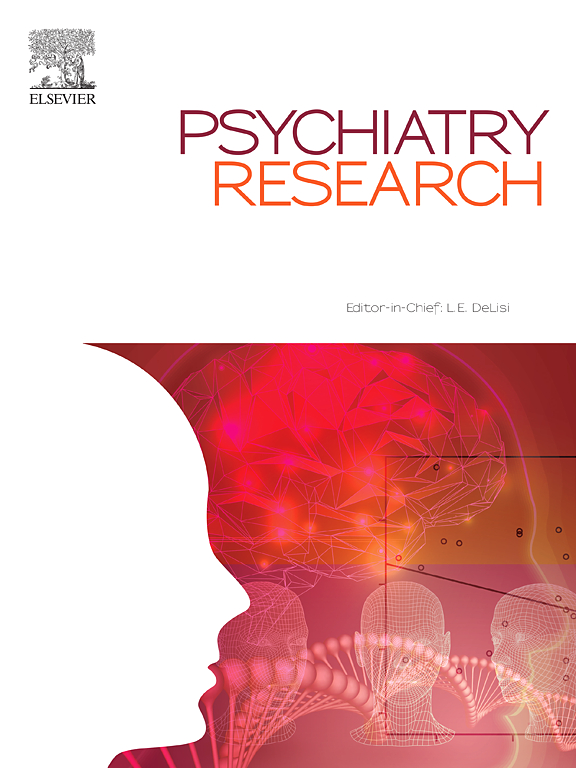A new model to study season-of-conception effects on child neurodevelopment based on maternal history of seasonal affective disorder
IF 4.2
2区 医学
Q1 PSYCHIATRY
引用次数: 0
Abstract
Season of birth/conception has been used to study neurodevelopmental risk in hundreds of studies, however the translational impact of this work remains limited. We propose a new model to study season-of- conception effects on neurodevelopment using maternal fall-winter seasonality as a key moderating variable, and provide initial empirical data to support this new approach. In an ongoing pregnancy cohort study we evaluated associations between season-of conception and maternal history of fall-winter Seasonal Affective Disorder (SAD) on child executive functioning in 520 children at age 54 months. Executive functioning was measured using computerized administration of the Flanker test (a measure of attention) and the Dimensional Change Card Sort (a measure of cognitive flexibility). Results indicated that sixty-four mothers (12.3 %) met criteria for historical fall-winter SAD. MANCOVA found a significant season of conception (fall-winter vs. spring-summer) by maternal SAD (yes/no) by sex (female/male) interaction predicting the two child outcomes (F = 4.11, df= 2,509, p=.017). In the subgroup of children in the SAD group, girls conceived in the fall-winter vs. spring-summer months had significantly lower scores on the Dimensional Change Card Sort. No significant effects related to season of conception and/or maternal SAD were found in boys. Similar results were found after controlling for maternal depressive symptoms during pregnancy. In summary, season-of-conception was associated with impaired child executive functioning at age 54 months, but only in girls of mothers with a history of fall-winter SAD. The use of maternal seasonality and sex as moderating variables may be critical to early neuro- developmental research based on pregnancy timing, particularly at more northern latitudes.
求助全文
约1分钟内获得全文
求助全文
来源期刊

Psychiatry Research
医学-精神病学
CiteScore
17.40
自引率
1.80%
发文量
527
审稿时长
57 days
期刊介绍:
Psychiatry Research offers swift publication of comprehensive research reports and reviews within the field of psychiatry.
The scope of the journal encompasses:
Biochemical, physiological, neuroanatomic, genetic, neurocognitive, and psychosocial determinants of psychiatric disorders.
Diagnostic assessments of psychiatric disorders.
Evaluations that pursue hypotheses about the cause or causes of psychiatric diseases.
Evaluations of pharmacologic and non-pharmacologic psychiatric treatments.
Basic neuroscience studies related to animal or neurochemical models for psychiatric disorders.
Methodological advances, such as instrumentation, clinical scales, and assays directly applicable to psychiatric research.
 求助内容:
求助内容: 应助结果提醒方式:
应助结果提醒方式:


